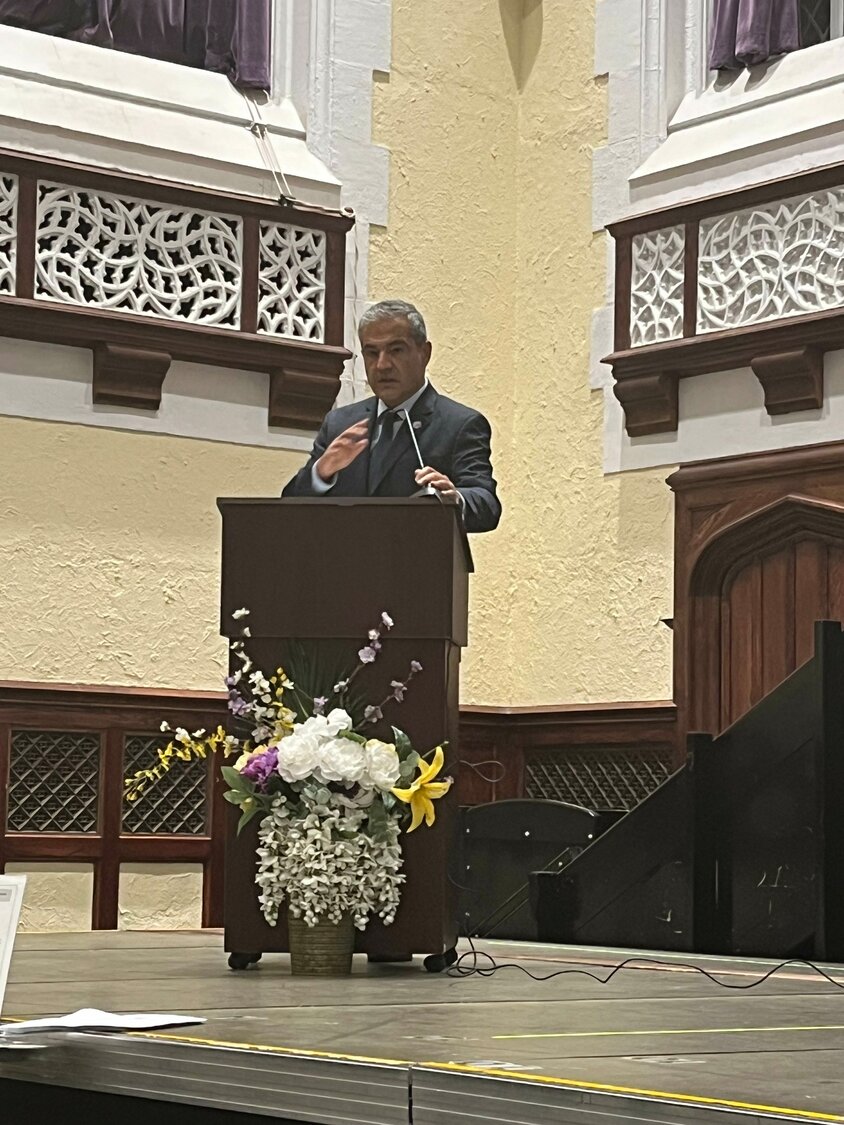Saturday, October 5, 2024
How did the Oyster Bay-East Norwich Central School District's graduation rate reach 100 percent?

The Oyster Bay-East Norwich Central School District has introduced a significant change to its leadership structure, a move that district officials say is aimed at enhancing student achievement by providing more focused support for curriculum and instruction. At the Sept. 17 Board of Education meeting, administrators presented details on the restructuring, which was approved unanimously by the board.
Superintendent Francesco Ianni, who spearheaded the changes, emphasized that the new structure was designed to prioritize student results.
“When positions become vacant, our goal is always to fill them with the most qualified candidate,” Ianni said. “We focus on student success and what students need. That’s the driving force behind all our decisions.”
“What you want in a school is centralized leadership,” he said. “When there are too many chiefs working independently, it can be less productive. We wanted to make sure the principal, as the educational leader of the building, had clear oversight and direction.”
Under the new system, each school’s principal will now oversee a team that includes assistant principals, “curriculum associates” and instructional specialists, such as lead teachers and technology coaches. This centralized model will ensure that all staff members are working toward the same goal under a unified leadership.
“The principal will now be the clear leader, with a team working directly under them, all focused on student achievement,” Ianni added. “By simplifying the chain of command, we ensure that decisions are made quickly and effectively, benefiting both teachers and students.”
A notable change in the leadership structure is the introduction of curriculum associates at the elementary and secondary levels. These newly created roles will focus exclusively on curriculum development and instruction, a shift from the previous model, in which a single supervisor might oversee grades K-12 in a subject area. According to Ianni, this change will allow for more specialized attention at each level.
“One of the key benefits of this structure is the focus it provides,” he explained. “Instead of having one curriculum person responsible for everything from kindergarten through 12th grade, we now have dedicated associates for the elementary and secondary levels. This means that when it comes to things like high school Regents exams or elementary literacy programs, each associate can focus on the unique needs of that age group.”
School board President Laurie Kowalsky echoed Ianni’s sentiments about the need for more targeted curriculum support.
“We’ve always had incredibly bright students, but we felt their test scores didn’t fully reflect their potential,” Kowalsky said. “By dedicating curriculum associates to specific levels, we can better address the learning needs of students at every stage of their education.”
The restructuring comes at a time when the district has already seen impressive results in student achievement. The graduation rate has risen from around 88 percent three years ago to 100 percent for the most recent senior class.
“We’re in a great place,” Ianni said, pointing to statistics such as the graduation rate and the number of students scoring 3 or higher on AP exams. “Our teachers are doing an amazing job, and this new structure is designed to give them the support they need to continue that success.”
Kowalsky agreed, adding that the board’s role was to support the administration’s efforts to improve student performance.
“We don’t run the schools directly — that’s the superintendent’s job — but we ensure that the district is operating in a way that benefits the students,” she said. “This new structure was created by Dr. Ianni, and when he presented it to the board, we felt it was a great idea.”
While the restructuring will primarily affect how administrators and teachers collaborate, district officials hope that students, and parents, will see the results in the classroom.
“Parents might not notice a dramatic change in day-to-day operations, but what they will see is improved instruction,” Kowalsky said. “Whether it’s more focused reading programs in the elementary schools or better preparation for Regents exams in the high school, the goal is for every student to benefit from a more tailored approach to learning.”
Ianni added that the new leadership structure is designed to give teachers more direct support, allowing them to focus on what matters most — student achievement.
“The teachers are the ones making a difference in the classroom,” he said. “Our job is to give them the resources and support they need to succeed.”
With the new structure in place, Ianni said the district remains focused on its core mission: giving students a high-quality education. “At the end of the day, it’s all about the students,” he said. “We’ve made these changes to ensure that every student has the opportunity to succeed.”
The district plans to monitor the effects of the new structure closely over the coming school year and adjust it as needed.
HELP SUPPORT LOCAL JOURNALISM
The worldwide pandemic has threatened many of the businesses you rely on every day, but don’t let it take away your source for local news. Now more than ever, we need your help to ensure nothing but the best in hyperlocal community journalism comes straight to you. Consider supporting the Herald with a small donation. It can be a one-time, or a monthly contribution, to help ensure we’re here through this crisis. To donate or for more information, click here.
Sponsored content
Other items that may interest you






